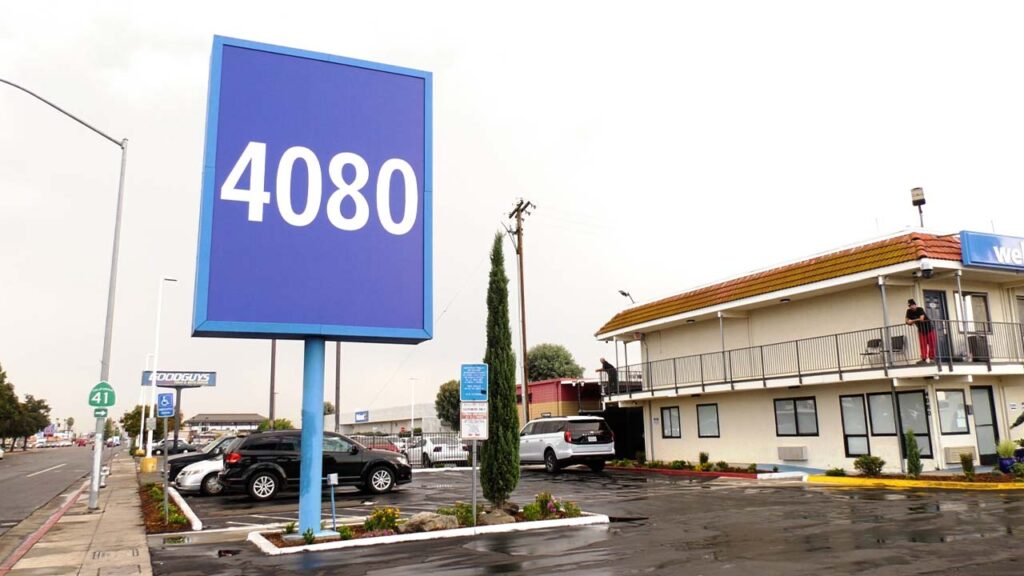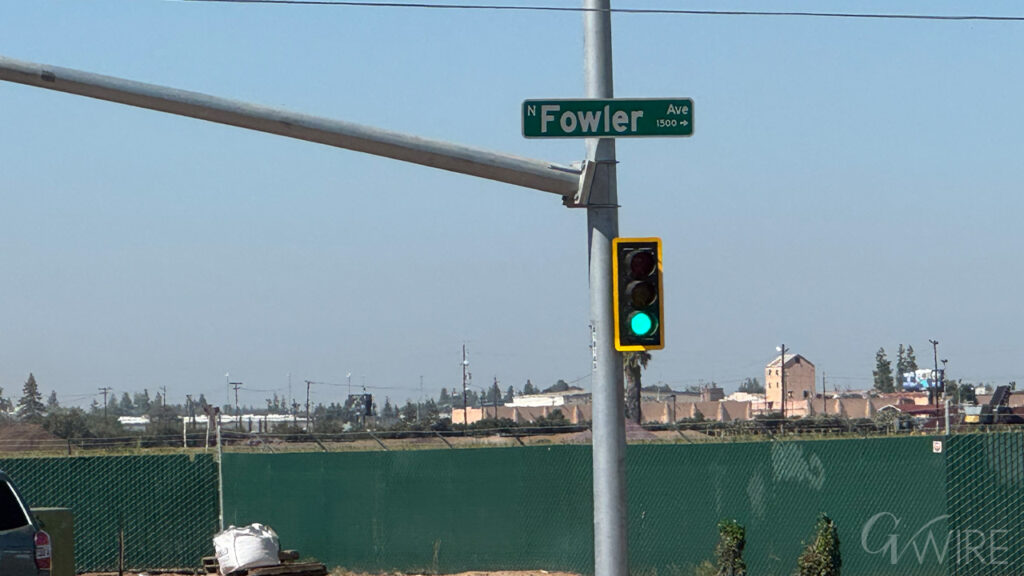Share
By Matt Levin and Jackie Botts, CalMatters
California’s most vexing issue is also its most shameful: the large and rising number of residents who lack a safe place to call home. In a state with vast amounts of wealth, more than 150,000 of its residents sleep in shelters, cars, or on the street.
The United Nations compared the tent encampments of San Francisco to the slums of New Delhi and Mexico City. Nearly 5,000 people live in the half square mile of Los Angeles’ Skid Row. And while the problem is most acute in California’s urban centers, homelessness is now a common fixture in many of the state’s suburbs and rural towns. State and local officials have pledged billions in recent years to help, but voters remain frustrated by a lack of visible progress.
President Donald Trump has wielded the state’s homelessness woes as a political cudgel, excoriating Gov. Gavin Newsom and the state’s progressive policies for allowing the country’s “best highways, our best streets, our best entrances to buildings” to be blockaded by people without homes. In a Christmas Day tweet, Trump repeated his threats of federal intervention if the state fails to fix the problem.
Here’s what you need to know about California’s homelessness crisis — including possible solutions.
How Many People Are Homeless?
At last official count 151,278 individuals are homeless in California, according to the U.S. Department of Housing and Urban Development. That’s the highest number since at least 2007, and represents a nearly 17% uptick since 2018. The number of unsheltered Californians — living on the streets or in cars — has surged the past year.
Official homelessness statistics mostly come from “one night counts” — a volunteer-led snapshot of the number of people experiencing homelessness one night in January. Experts say this method likely underestimates the unsheltered, and doesn’t capture the total number of people who fall into homelessness over the course of a year, which could be two or three times higher.
It’s not surprising that California, the largest state, has the biggest homeless population in the country. But while about 1 in 9 Americans lives in California, roughly 1 in 4 homeless Americans lives here. New York and Hawaii have slightly higher per capita rates of homelessness, but California has the largest proportion of people living without shelter. That means the state’s homeless population is far more visible than in other places, and more vulnerable to the illness, violence and death that accompany living on the street.
And although states such as Texas and New York have seen a slight uptick in their homeless counts since last year, California saw the largest proportional swell of any state besides New Mexico. The Trump administration is quick to point out that the country would have seen an overall decline in homelessness if California and Oregon were excluded from the count.
Who Are They?
Governments and services providers tend to focus their efforts on the chronically homeless — an individual with a disability who has lived without consistent shelter for a year, or has had multiple recent bouts of homelessness. About 26% of Californians experiencing homelessness fit that definition, or some 34,000 people.
African-Americans are disproportionately found on California’s streets — roughly 30% of the state’s unhoused population is black, according to HUD. Several Bay Area regions, including San Francisco and Marin County, have some of the highest rates of black homelessness in the country. A legacy of racial discrimination in rental housing, higher rates of poverty among black families, and overrepresentation in the state’s incarceration and child welfare systems all contribute to the high numbers of African-Americans experiencing homelessness.
A person experiencing homelessness is about twice as likely to be male than female, and significantly more likely to be LGBTQ than in the population at large. A growing proportion are seniors, with new research indicating nearly half fall of seniors on the street fall into homelessness after age 50.
Are They Local, or Are They Coming From Somewhere Else?
One of the more enduring myths about California’s homeless population is that the vast majority have traveled here from other states, seeking generous government assistance and weather more hospitable to living outdoors. It’s a baseless claim perpetuated by both sides of the aisle — Gov. Newsom has made it repeatedly.
While comprehensive statewide data is lacking, local surveys indicate people living on the streets are typically from the surrounding neighborhood. Example: 70% of San Francisco’s homeless people were housed somewhere in the city when they lost housing; only 8% came from out of state. Three quarters of Los Angeles County’s homeless population lived in the region before becoming homeless.
There’s little evidence to suggest undocumented immigrants constitute a large share of California’s homeless population. But those that are unhoused are particularly difficult to help. Crucial safety net resources such as Social Security, Section 8 housing vouchers and food stamps are unavailable to the undocumented, who often resist engagement with homeless services providers because of deportation fears. Language and cultural barriers also complicate re-housing efforts.
A Welcome Decrease in Veteran and Family Homelessness
Military veterans, at higher risk of mental illness and substance abuse issues, make up a disproportionate share of the country’s homeless population. Roughly 11,000 veterans experience homelessness in California on any given night, about 8% of the state’s total homeless population.
The good news is that the number of vets living on the streets has declined significantly over the past decade, both nationally and in California. Experts credit initiatives from the Obama administration incentivizing a “housing-first” approach — where permanent housing is provided without preconditions for addiction or mental health treatment — to help homeless vets. The city of Riverside succeeded in housing all 89 of its homeless veterans after adopting that approach.
Homelessness among families is also down over the last decade. Still, about 6,000 families and 12,000 children were homeless in California last year, according to point-in-time estimates. Unlike households without children, those with at least one child are far more likely to utilize emergency shelter or transitional housing. One striking statistic: Infancy is the age at which a person in the United States is most likely to be found in a homeless shelter.
Several studies have found strong correlations between early childhood housing instability and behavioral and learning difficulties later in school.
High Rents Drive up Homelessness
Mental health problems, addiction, childhood trauma, interaction with the criminal justice system and poverty all play significant roles in whether someone becomes homeless. But the primary reason? They can no longer afford rent.
About 1.3 million California renter households are considered “extremely low income,” making less than $25,000 a year, according to the California Housing Partnership, a nonprofit organization the state created to advise affordable housing builders. Predictably, these financially strapped households can barely afford the state’s escalating rents, and are most at risk of falling into homelessness.
Fueled by decades of underproduction, California’s stock of “naturally occurring” affordable housing is dwindling, as shoddy, older apartments that used to house lower-income families are increasingly taken by higher-income tenants.
Government-subsidized housing has not filled the gap. That’s partly because doing so would be insanely expensive. The nonpartisan Legislative Analyst’s Office estimates that building new housing for every low-income Californian who needs it would cost $15 to $30 billion annually, That’s what the state currently spends on Medi-Cal, its massive program to provide health care to the poor, which covers a third of the state’s residents.
What About Mental Illness and Addiction?
Advocates for homeless people are leery of casting too much blame for the state’s crisis on mental health and substance abuse issues. They argue that plenty of low-income residents in other states struggle with drug addiction and debilitating psychological conditions. They simply manage to remain off the streets because the rent is cheaper.
But recent data suggests these issues are more prevalent among people experiencing homelessness than previously reported, especially for those living on the street. About half of the unsheltered nationally report that mental health and/or substance abuse contributed to their loss of housing. A Los Angeles Times investigation found two-thirds of L.A. County’s residents living on the streets suffer from a psychological or substance abuse disorder, far more than what’s been reported in official statistics that exclude mental disorders that aren’t “long-term.”
Methamphetamine use is up across the West Coast, and is often to blame for some of the most visible episodes of homelessness seen on California streets. Unfortunately, physicians say meth addiction is confoundingly difficult to treat. While methadone is available to wean heroin addicts off of opioids, no such replacement medication exists for meth.
Many have also blamed California’s conservatorship laws for making it too difficult to compel treatment for people with mental illness or drug addiction living on the street. Civil libertarians and disability rights groups argue that conservatorship —when a court-appointed official manages another person’s life, including medical decisions — should be used as sparingly as possible, as it risks violating civil liberties and is a hollow remedy given the severe shortage of actual treatment options. Under a 1967 state law known as the Lanterman-Petris-Short Act, Californians can be held for treatment against their will only if they are deemed a danger to themselves or others, or are determined to be gravely disabled. Other states such as New York do not impose such strict requirements. California is experimenting with allowing three counties to take legal power over mentally ill people living on the street, but only in limited circumstances.
Finally there is the eternal question of cause and effect: The severe stresses people face when they lose shelter and are forced to live exposed on the streets can also wreak havoc on their mental health and lead to substance abuse.
Other Factors That Cause Homelessness
Survivors of domestic violence are among those at high risk of homelessness. One California study found that women reporting an episode of domestic violence were four times more likely to suffer housing instability than other women.
The formerly incarcerated — ineligible for many public housing programs and frequently a target of discrimination in the rental housing market — often take refuge in emergency shelters or on the streets. While comprehensive California data is lacking, one study by a criminal justice reform advocacy group found that people who have been in jail or prison are ten times more likely to experience homelessness than the general public.
Youth aging out of the foster care system likely constitute a significant share of the more than 11,000 homeless young adults in California. One study found 30% of former foster care children in the Midwest were homeless at least once before age 24. Lacking family support networks and often victims of childhood traumas, about 25% of California’s foster youth transitioning into adulthood live in precarious housing situations.
Emergency Shelters and Permanent Supportive Housing
California has a patchwork of government-provided housing for people experiencing homelessness. While the nomenclature varies from city to city, the two most prevalent and important categories of housing are emergency shelters and permanent supportive housing.
Emergency Shelters: These are any facilities that provide temporary shelter for people experiencing homelessness. At their most basic they are a barracks-like arrangement of cots, and provide a bed and a meal. Typically they are operated by publicly funded nonprofit and religious organizations. Many shelters bar residents from staying with partners or pets, and are often viewed by homeless people as dangerous and dirty, even compared to sleeping on the streets. A KPCC investigation of Los Angeles area shelters last year found reports of rats, bedbugs, foul odors and harassment rampant at several shelters.
But while shelter beds frequently go unused in Los Angeles County, where transportation is also a complicating factor, overall the state has a major shortage. Federal funding has shifted away from emergency shelters over the last decade, causing the Bay Area, for example, to lose 1,700 shelter beds since 2011, according to the Bay Area Council Economic Institute.
San Francisco and Los Angeles have tried to reinvent emergency shelters, equipping them with health and social services providers who can help guide residents to more stable housing outcomes. According to city officials more than 50% of the short-term residents of San Francisco’s “navigation centers,” which are tailored to high-needs clients, are ultimately placed in housing. Emergency shelters are generally much cheaper to build than permanent supportive housing, but new projects often run into stringent community opposition.
Permanent Supportive Housing: Homelessness experts agree that emergency shelters are mostly just a Band-Aid — permanent supportive housing is the long-term solution. Usually targeted at the chronically homeless, this offers a highly subsidized apartment paired with support services including psychological counseling, substance abuse rehab and job training. Permanent supportive housing is a pillar of the “housing first” model of ending homelessness: Individuals don’t need to quit drugs or agree to participate in any program to get a permanent roof over their head. Studies show that once placed in permanent supportive housing, residents tend to stay off the streets and out of the hospital and jail, saving taxpayers considerable expense.
One problem: Permanent supportive housing is really expensive to build. In Los Angeles, a recent estimate from the city auditor put the median cost of building one unit at more than $530,000. A new project coming on line in San Jose is estimated to pencil out at roughly $470,000 per unit. The outrageous price tags aren’t just driven by land costs — a shortage of construction labor and prolonged city approval processes are also to blame. Cities including Oakland have recently begun buying and converting single-room occupancy hotels to sidestep prohibitively high new construction costs.
Preventing Homelessness
Many California cities have made significant strides in moving people from streets and shelters into safe, stable housing. The Los Angeles Housing Services Authority, buoyed by fresh state and local funds approved by voters, estimated that it was able to place more than 20,000 people experiencing homelessness into housing last year.
So why did L.A. County’s homeless population still grow 12% between 2018 and 2019? Because an estimated 55,000 residents simultaneously lost a place to live, according to the Los Angeles Homeless Services Authority (another source puts the number closer to 34,000) . San Francisco officials say for every homeless person they house, another three fall into homelessness. Much to the chagrin of local politicians trying to prove taxpayer money is being spent effectively, new shelters and supportive housing will have trouble making a dent in visible homelessness unless the spigot is plugged in the first place.
States and local governments across the country (including California) are devoting a rising share of homelessness resources to prevention strategies. These include:
- Eviction counseling and defense: Being evicted — forcibly removed from an apartment — can lead to devastating family housing instability. An eviction record also makes it exceedingly difficult to find rental housing. The Newsom administration bulked up legal services in last year’s budget for low-income tenants facing evictions.
- Emergency rental assistance: New York and Chicago have seen early successes with programs that provide small cash assistance and landlord mediation services to renters struggling to make ends meet. Many California cities have versions of these programs. But targeting emergency aid to those most at risk of homelessness can be difficult. A pilot project from Los Angeles County, UCLA and the University of Chicago hopes to use big data and predictive analytics to better target emergency services to stem homelessness.
- Diversion and rapid re-housing: Quickly connecting individuals who just lost their home with a new one is one of the most cost effective ways of preventing long-term homelessness. In rapid re-housing programs, people teetering on the verge of homelessness or new to a shelter are often provided a security deposit, first month’s rent (or more), and connected to a landlord with an immediate vacancy.
Law Enforcement’s Role
Is it legal for someone to sleep on the sidewalk or other public property?
A landmark federal court decision says yes — if there aren’t shelter beds available. Allowed to stand by the Supreme Court in late 2019, the Ninth Circuit Court of Appeals’ ruling in Martin vs City of Boise held that ticketing, arresting or otherwise criminalizing people living outside violates constitutional protections against cruel and unusual punishment. Several California cities and counties filed amicus briefs urging the Supreme Court to reverse the decision, arguing it would hamstring efforts to clear homeless encampments that posed serious public health and safety risks.
Homelessness puts enormous financial and resource strains on California police and sheriff departments. A recent audit of how Los Angeles spends homelessness dollars found that over 50% went to law enforcement. Several police departments have created units dedicated to interacting with homeless populations, often pairing cops with social workers.
Sweeps also take a toll on unsheltered people, who can lose what little belongings they still have — including sleeping bags, family photographs and medicine.
What Is the State Doing About Homelessness?
As homelessness has soared in California, so has state spending on programs to address it, especially in the last two years.
In 2018, then-Gov. Jerry Brown directed $500 million to emergency homelessness funding in response to a plea for help from mayors of the state’s 11 largest cities. That same year, voters passed Prop. 1, a $4 billion bond that funds affordable housing construction. They also passed Prop. 2, a $2 billion bond to fund supportive housing for people with mental illness.
In his first year, Gov. Gavin Newsom upped the ante on homelessness spending. He designated a record $1 billion of his 2019-2020 budget to one-time investments combating homelessness, on top of $1.75 billion to expand California’s affordable housing stock. The budget includes funding to increase welfare grants for low-income families with children, to house mentally ill patients who are homeless or at-risk ,and to rapidly rehouse college students who become homeless.
The largest chunk, $650 million, went to emergency aid for California’s cities and counties to build more emergency shelters, medium- and long-term housing and motel conversions. But that money didn’t start flowing immediately: Cities and counties couldn’t apply for the funds until early December
In an effort to get local governments to cooperate with his homelessness agenda, Newsom also signed a suite of bills that remove regulatory barriers to building more housing for homeless people. Two of the new laws allow developers to bypass certain requirements of the California Environmental Quality Act, which neighborhood groups have tried to use to block new housing developments such as a homeless shelter on San Francisco’s Embarcadero.
A task force on homelessness Newsom assembled in May is expected to release its recommendations soon. Those will shape how Newsom tackles homelessness in 2020 on a range of issues, from whether he’ll push a legal “right to shelter” to how much money he’ll budget to try to fix the problem.
Counties and cities also shell out significant funds to address homelessness. For example, the Los Angeles city budget for 2018-2019 included $426 million for homeless outreach and services, largely financed by Prop HHH, a $1.2 billion bond measure passed by voters in 2016 to fund 10,000 new units of supportive housing over ten years. But there’s no comprehensive statewide accounting of local spending on the problem.
Though California spends big on homelessness, failing to house the growing number of people living on the streets may cost much more. A 2016 study found Santa Clara County spent $520 million a year on the county’s homeless population between 2007 and 2012, including the costs of health care, jail and public benefits.
What Are Trump and the Feds Doing?
According to data from the U.S. Treasury Department, California communities received nearly half a billion in federal grant money to fight homelessness in 2018. California couldn’t come close to providing its current levels of emergency shelter, housing vouchers, health services for the indigent and permanent supportive housing without significant assistance from Washington.
Under the Obama administration, federal resources were steered toward a “housing first” model that prioritized permanent supportive housing and allowing people to access housing without preconditions such as sobriety or job training. While the Trump administration has yet to officially deviate from that bipartisan approach, recent personnel decisions and public comments from the president have California homeless advocates and housing officials fearful that a federal “crackdown” on homelessness is looming.
Governor Gavin N has done a really bad job on taking care of the homeless population in California. If he can’t fix the problem, the Federal Govt. will get involved! https://t.co/2z8zM37PUA
— Donald J. Trump (@realDonaldTrump) December 25, 2019
What exactly a “crackdown” would entail remains an object of fear, loathing and uncertainty for the Newsom administration. A 2019 report from the White House Council of Economic Advisers blamed California’s homelessness woes on regulatory barriers to building new housing and lax enforcement of laws against loitering and public nuisance. The report also cast doubt on the efficacy of permanent supportive housing, prompting a homelessness expert at the University of California San Francisco to compare the White House’s findings to climate change denial.
Some fear the Trump administration intends to try to force homeless people living on California’s streets to move to former federal armories and other converted federal buildings. While experts says the legal and practical obstacles to such widespread sweeps are considerable, officials at the federal department of Housing and Urban Development have reportedly scouted and inquired about properties across the West Coast. Trump could also issue an executive order that strips funding from cities that tolerate public encampments, beefs up law enforcement resources to deal with homelessness, and directs funding to shelters and away from permanent supportive housing.
What Are Other Places Doing Successfully?
Some U.S. cities, counties and states have made enviable progress in reducing homelessness, revealing possible solutions for California. Four communities have been recognized by the U.S. Interagency Council on Homelessness for effectively ending chronic homelessness, meaning that any homeless person with a disability is immediately provided shelter and is able to land permanent housing within 90 days if he or she wants. Three states and 78 communities have ended veteran homelessness.
Houston has reduced homelessness by over half, from a peak of around 8,500 in 2011 to around 4,000 in 2019, according to federal point-in-time data. The city began by bringing together more than 100 agencies, including the city of Houston, the counties, nonprofit agencies, businesses and the federal HUD. Coalition members continually update a data dashboard that tracks homeless people as they interact with shelters and services. During regular meetings, they match a list of homeless people seeking permanent supportive housing with spots. A sobriety center provides a safe place for people who are publicly intoxicated to sober up — and avoid an arrest record. Federal funding has been key to bringing thousands of new supportive housing units online: HUD nearly doubled its funding for Houston homelessness programs between 2008 and 2018, to $38.2 million.
In Atlanta, a city similar in population to Sacramento or Long Beach, the homeless population has also more than halved since 2010, even as rents have raced upwards. Like Houston, Atlanta has embraced the “housing first” approach, investing public and private dollars in a growing stock of low-barrier shelter beds, rapid rehousing units and permanent supportive housing. One innovative solution: A host-family program that pairs homeless LGBTQ young adults with supportive households.
What About Outside-The-Box Solutions?
Desperate shortages of affordable housing have led some cities to consider desperate measures.
Take for example, a recent proposal out of Oakland, where homelessness grew 47% from 2017 to 2019. City Council President Rebecca Kaplan floated a plan to house up to 1,000 homeless residents on a cruise ship in the city’s port. Though not a novel idea — cruise ships offered emergency shelter during Hurricane Katrina — the Port of Oakland instantly dismissed the proposal as “untenable,” while Twitter users pointed out the irony of housing people in boats rather than actual homes.
Cities around the country have jumped on the tiny house craze, building villages of the pint-sized dwellings for the homeless. Los Angeles has piloted a program to pay homeowners to host homeless people in backyard “granny flats.” Other cities have turned to 3D-printed homes that can be turned out in 48 hours to lower the cost of building extremely-affordable units.
CalMatters.org is a nonprofit, nonpartisan media venture explaining California policies and politics.
Categories

Trump: Israel and Hamas Agree to First Phase of Gaza Peace Plan

Fresno Police Say K-9 Injured While Arresting Assault Suspect

Texas Megachurch Pastor Pleads Guilty to Child Sex Abuse
















